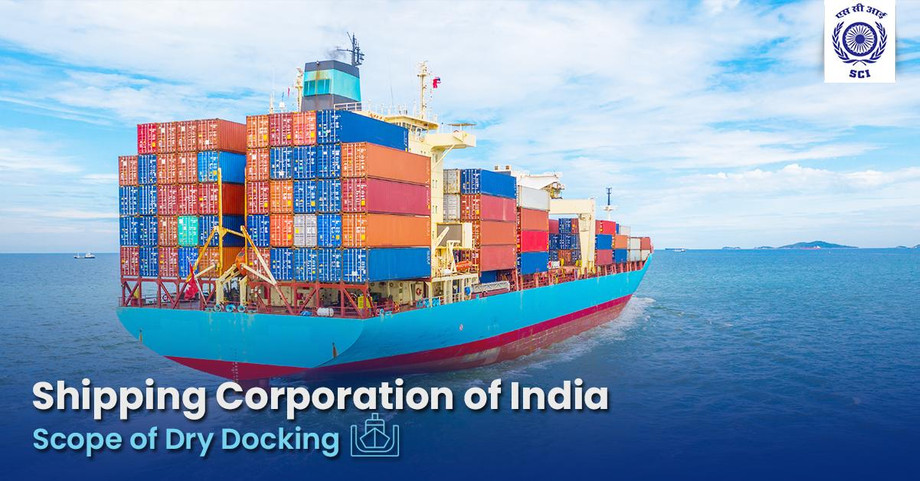Shipping Corporation of India — the Indian government-owned public sector organization serves the national and international trade by operating and managing vessels. Established in October 1961, SCI started as a marginal liner company with just 19 vessels. SCI has established itself to be the lifeline of the nation delivering an uninterrupted supply of crude oil. The presence of a modern, young, and diversified fleet with trained and experienced manpower has enhanced the growth of SCI.
SCI delivers the exuberant dry docking services to the ships that need to be repaired. SCI being India’s premier shipping line drives the economy operating around one-third of the Indian tonnage.
Dry Docking Services:
During the dry-docking process, initially, the crew monitors the most important part of the ship to check the visible or internal damage. Repairing minor and major defects in the ship takes a long time to enhance its productivity.
Here are the procedures to be carried out post the ship dry docked:
1. Thickness Gauging:
The structure of the vessel hull should be cautiously scrutinized for defects since it is constantly in contact with the seawater. Though the hull doesn’t seem to be damaged, its thickness needs to be tested to avoid any mishaps. An ultrasonic gauge is used to monitor the thickness of the hull by measuring the time interval between the consecutive echo signals reflecting from the hull surface. Since the paint applied on the surface of the hull doesn’t interrupt the calculations, it has turned out to be the most efficient way of testing the thickness of a ship’s hull.
2. Destructive & Non-Destructive Testing:
Breaking down or damaging certain parts of the ship to test the strength is destructive testing. It consists of reconstructing the same part of the ship to endure more damage. This process evaluates materials and parts of the ships ensuring no other feature of the ship is damaged. Ultrasonic testing, visual inspection, and liquid penetration technique are a few non-destructive testing methods.
3. Underwater Repair and Diving:
Underwater repair comprises of inspection and repair of defected parts of a ship while it is in the sea. The companies offering these services are expertise in examining the surface of the ship for flaws that are visible underwater. Advanced machinery like underwater welding is used to repair damaged propellers while the ship is in the sea.
4. High-Pressure Washing:
The method cleans the ship’s hull of the dirt collected on the hull over a period of time. The presence of a bio foul on the hull leads to corrosion of the surface. Cleaning the surface of the hull is crucial and high-pressure washing is an efficient way to do it. It removes the dirt using the manual gun systems and high-pressure water jets. Rotating nozzles are used to clean large areas of the hull.
5. Robotic Scanning:
Manually inspecting a ship is a tedious task. With the technological innovations, currently, robots are ensuring automated inspection of the entire ship. Robots scan the ships for inaccuracies and other faults. It is an instant detection technique that reduces the need to repair huge damages.
The efficiency of the ship depends on how well the operating parts of the ship are maintained. Robotic scanning ensures accurate scanning of the defected parts of the ship.
6. Anchor & Chain Servicing:
The chains and anchor stabilize the ship while there is rough weather. With time, the anchor and chain in the ship which is constructed from iron start to erode or rust. Thus it is crucial to replace and regularly maintain the anchor and chain of the ship.
Wrap Up:
Dry Docking services involve monitoring the defected portions of the ship every 12 months. SCI delivers exuberant dry docking services repairing minor and major defects enhancing the productivity.

